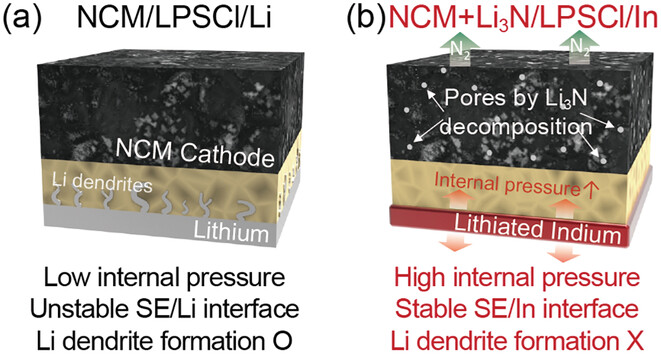
All-solid-state batteries (ASSBs) comprising solidified cathodes, electrolytes, and Li–metal anodes have attracted notable attention as promising future batteries for electric vehicles owing to their exceptional stability and expectation of achieving high energy density. However, its permanent operation has been hindered by Li dendrite growth, chemo–mechanical degradation, and interfacial instability, leading to Li exhaustion, increased resistance, and internal short-circuiting. Herein, for the first time, the authors report the effects of a lithium nitride (Li3N) sacrificial cathode on the cycling performance of ASSBs combined with a Li-free In layer. Through in situ evolved gas and internal pressure change analyses of the cells, it is found that, as with the liquid electrolyte cell, the decomposed Li3N compensates for active Li consumed by side reactions in the cell. Moreover, it is demonstrated that the improved interparticle contact by volume expansion of In through additionally supplied Li as well as the interfacial stability at the anode side by the dendrite-free In layer, are strongly responsible for the improved cyclability of the ASSBs. The findings reveal the effectiveness of the Li compensation approach for the stable cycling of ASSBs based on the secured interfacial stability at the anode side.
